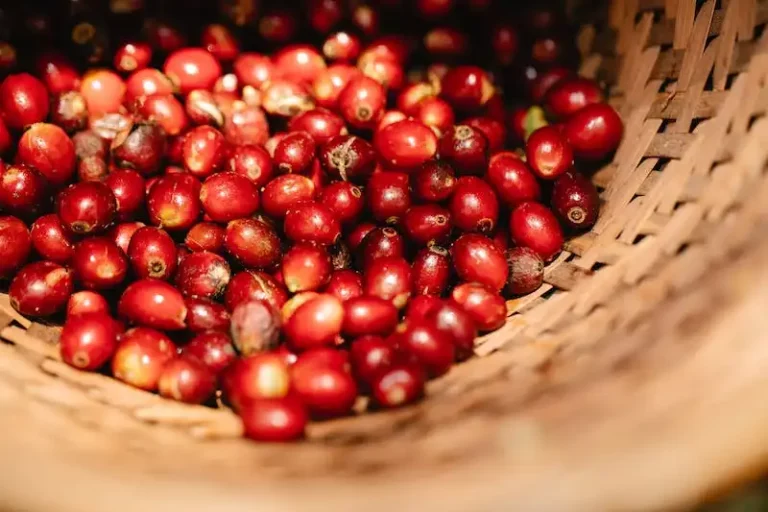A spider plant is a popular indoor plant known for its long, arching leaves that typically have a green stripe down the center. This plant is relatively easy to care for and can be a great addition to any home or office space.
One of the important things to keep in mind when caring for a spider plant is to not overwater it. Overwatering can lead to rot and other issues, so it’s best to wait until the top inch or so of the soil is dry before watering again.
Another common issue with spider plants is yellowing leaves. This can be caused by a few different reasons, including overwatering, underwatering, or major temperature changes. If you notice yellowing leaves, it’s best to assess the conditions and adjust accordingly.
When it comes to fertilizing your spider plant, it’s best to do so during the growing season, which is typically spring and summer. You can use a balanced, water-soluble fertilizer and follow the instructions on the package for application.
If you notice any dried-up or damaged leaves on your spider plant, it’s best to remove them to prevent the spread of any potential issues. This will also help the plant focus its energy on healthy growth.
Overall, spider plants are pretty low-maintenance and can thrive in warm, full-sun conditions. Just be sure to keep an eye out for any signs of stress or issues, and take the necessary steps to care for your plant to keep it looking gorgeous.
In summary, here are a few key takeaways for caring for a spider plant:
- Don’t overwater – wait until the soil dries between waterings.
- Address yellowing leaves by assessing the conditions and making any necessary changes.
- Fertilize during the growing season using a balanced, water-soluble fertilizer.
- Remove dried-up or damaged leaves to prevent the spread of any potential issues.
- Provide warm, full-sun conditions for optimal growth.
By following these steps, you can ensure that your spider plant stays healthy and vibrant for years to come.
Overwatered Spider Plant
Overwatering is a common issue when caring for spider plants. Spider plants are native to the jungle floor where they receive moisture from the humid environment, so they are not accustomed to excessive watering. If you notice that your spider plant’s leaves are browning, crispy, or yellowing, it is likely due to overwatering.
To save an overwatered spider plant, the first step is to stop watering it. Check the soil to see if it is still moist and only water it when the top few inches of soil feel dry to the touch. It is important to examine the root system of the plant to see if there is any root rot. If the roots appear brown and mushy, it is a sign of severe overwatering and the plant may not be able to be saved.
If the roots look healthy, the next step is to provide the spider plant with a well-draining potting mix and a container with drainage holes. Spider plants prefer a light and airy soil mixture that allows excess water to easily drain away. Place the plant in a location with bright, indirect light, as too much direct sunlight can cause stress and leaf burn.
While spider plants are typically easy to care for, they do not like to be overwatered. It is important to check the soil moisture levels regularly and only water the plant when necessary. If the tips of the leaves are turning brown, it is typically a sign of underwatering, and if the edges of the leaves are turning yellow, it is a sign of overwatering. Keeping the humidity levels around the plant stable can also help reduce the risk of overwatering.
To fix an overwatered spider plant, you can try giving it a flush of water to help remove any excess salts or fertilizer buildup that may be causing stress to the plant. This can be done by placing the plant in a sink or on a table and slowly pouring water through the soil until it runs out of the drainage holes. This will help flush out any accumulated salts and reduce the risk of root damage.
If the overwatering has been severe and the plant is showing signs of distress, such as wilted or drooping leaves, it may be necessary to repot the spider plant. When repotting, make sure to use a potting mix that provides good drainage and remove any dead or rotting roots with a pair of scissors.
It is important to note that spider plants can go through periods of dormancy during which their growth may slow down. This is a normal part of their growth cycle, and they will bounce back with proper care and attention.
In summary, overwatering can cause issues for spider plants and may lead to browning, crispy or yellowing leaves. It is important to check the soil moisture levels regularly and adjust the watering accordingly. Providing the plant with a well-draining soil mixture, placing it in a location with bright, indirect light, and controlling the humidity levels can help prevent overwatering. If the plant does show signs of overwatering, stopping the watering and examining the root system can help determine the severity of the issue and take appropriate steps to save the plant.
Key takeaways:
- Overwatering is a common issue for spider plants.
- Check the soil moisture regularly and water only when necessary.
- Provide a well-draining soil mixture and a container with drainage holes.
- Place the plant in a location with bright, indirect light.
- If the overwatering is severe, repotting may be necessary.
Overwatered Spider Plant How to Revive It
If you notice that your spider plant is looking wilted, with yellowing or curling leaves, it may be a sign of overwatering. Overwatering is one of the most common issues that can hurt a spider plant, as it can lead to root rot and eventually kill the plant if not addressed.
Spider plants prefer to be in well-draining conditions, as they do not like to sit in standing water. If the soil doesn’t drain properly, it can cause the roots to suffocate and be deprived of oxygen. This is where overwatering comes into play. When you overwater your spider plant, the excess water has nowhere to go and can end up sitting in the bottom of the pot, causing the roots to rot.
If you suspect that your spider plant is overwatered, the first step is to stop watering it immediately. Allow the soil to dry out completely before watering it again. This may take a few days or up to a week, depending on the location and conditions of your plant.
Once the soil has dried out, you must flush out the excess water from the pot. This can be done by gently lifting the pot and allowing any excess water to drain out through the drainage holes. If you notice that the soil is consistently staying wet and not drying out properly, you may need to adjust your watering habits or consider using a different potting mix or adding additional drainage materials.
After dealing with the overwatering issue, you may need to wait for some time to see improvement in the appearance of your spider plant. The roots need time to heal and recover from the rotting. During this time, it’s important to make sure that your plant is placed in a location with ample airflow and good lighting conditions.
If your spider plant has been severely damaged by overwatering and the leaves have turned mushy and brown, it may be necessary to remove them to promote new growth. Pruning the damaged leaves will not only improve the appearance of your plant but also allow it to redirect its energy towards healthy leaf development.
Preventing overwatering in spider plants is crucial for their overall health and well-being. To prevent overwatering, make sure to water your spider plant only when the top inch of the soil feels dry. It’s also important to choose a pot with drainage holes and use a well-draining potting mix. Spider plants are relatively easy to care for, but overwatering and lack of proper drainage can lead to various issues.
In general, spider plants prefer a slightly moist soil that is neither too dry nor too wet. While they can tolerate some drought, it’s important to keep the soil moist enough to sustain healthy growth.
If you’re unsure about the watering needs of your spider plant, it’s always better to underwater than overwater. Spider plants are native to jungle-floor environments, so they are accustomed to intermittent water sources and can handle periods of dryness without issues.
Spider plants are also relatively pest-resistant, but overwatering can create an environment that attracts pests such as fungus gnats and root rot pathogens. To prevent the risk of pests, make sure to maintain proper watering levels and provide good ventilation to your plant.
In case you are using a hydroponic system or want to experiment with alternative options, spider plants can also grow well using LECA (lightweight expanded clay aggregate) or water culture techniques. These methods provide multiple benefits, including better control over water levels and improved oxygen availability for the roots.
To summarize, overwatering can be detrimental to your spider plant’s health. It can lead to root rot and cause the leaves to wilt, yellow, and eventually die. To revive an overwatered spider plant, you must stop watering it immediately, allow the soil to dry out completely, and flush out the excess water from the pot. Once the plant has recovered, adjust your watering habits to prevent overwatering in the future and provide optimal growing conditions for your spider plant to thrive.




